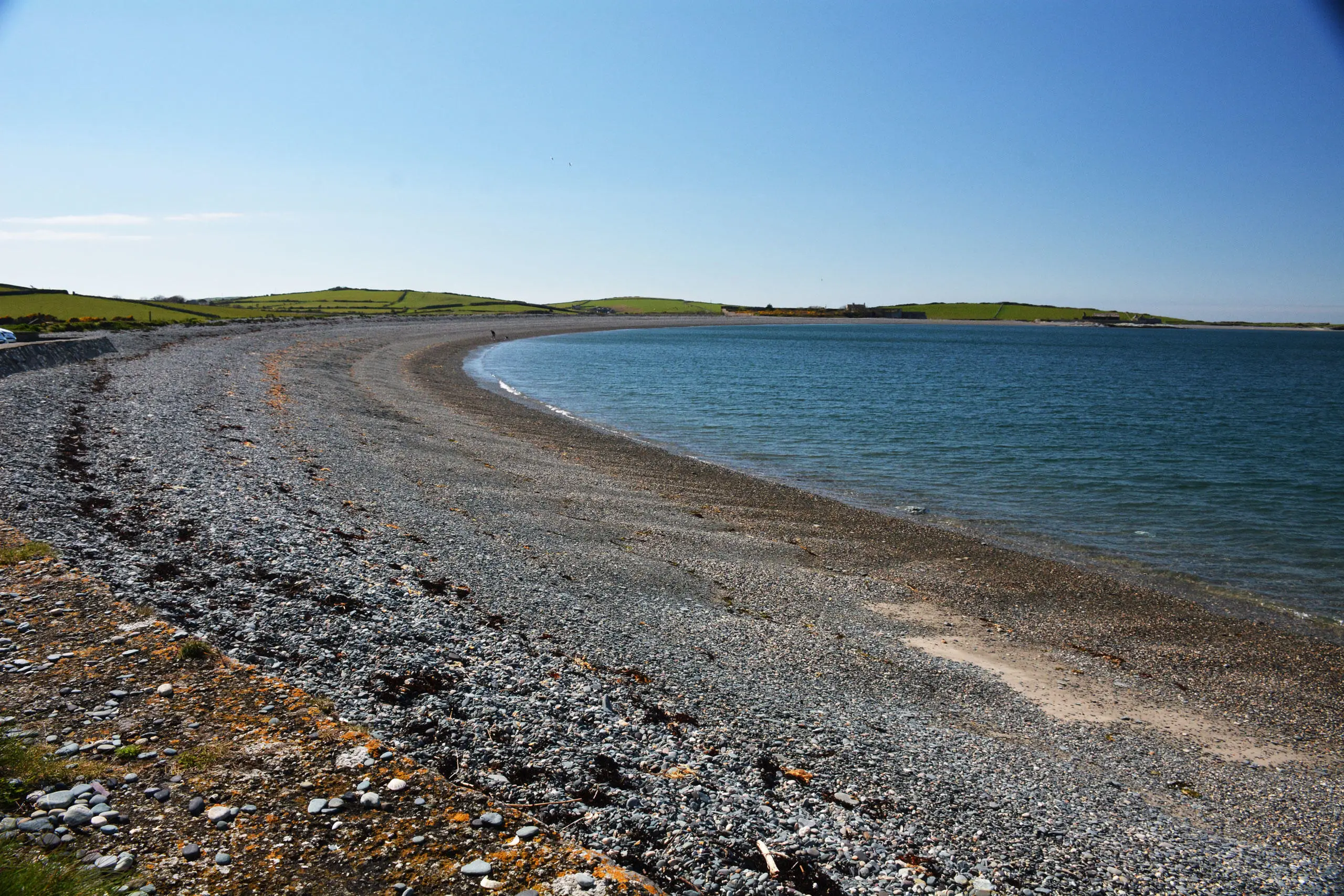The bay is situated approximately 3 miles from Cemaes on the north west coast of Anglesey. It is flanked by the headlands of Trwyn Cemlyn and Cerrig Brith.
The bay and surrounding land forms part of the Cemlyn Estate which is owned by the National Trust.
Since 1971 the North Wales Wildlife Trust has leased the lagoon area which they manage as a nature reserve. In the summer months, the lagoon provides a sanctuary for its famous tern colony which is deemed nationally important as it is home to the only breeding colony of sandwich terns in Wales.
The lagoon was created in the 1930s by the wealthy Captain Vivian Hewitt. He built a dam and a weir at Cemlyn, changing the saltmarsh area into the lagoon which can be seen at the site today. He had a keen interest in birds, and lived at Bryn Aber, which is situated on the western side of the bay.
Captain Hewitt was the first person to fly from Wales to Ireland, but his achievements were overshadowed by the Titanic disaster of 1912. The Anglesey Coastal Path traverses the bay and the National Trust have a series of short circular walks taking in the bay and the picturesque surrounding area.
The wonderful views can be appreciated from the car parks from where it is also possible to witness the tern breeding spectacle over the summer months.
Cemlyn Bay Lagoon
Renowned for its large tern colony, which includes common and arctic terns.
Cemlyn Bay is a North Wales Wildlife Trust reserve, a Site of Special Scientific Interest (SSSI) and a Special Protection Area (SPA).
It is especially renowned for its large tern colony, which includes common and arctic terns, and one of the UK’s largest nesting populations of sandwich terns, which reside on the lagoon island during the summer months.
Sandwich terns are one of Britain’s earliest arriving migrants and can often be seen around our coasts from late March.They are a wide-ranging species, spending the winter around the coasts of Africa and some even further afield in the southern hemisphere. They are also long-lived; data from ringed birds has shown that they can live for 30 years. They are sociable birds, nesting in large colonies often alongside other tern species.
The North Wales Wildlife Trust employs wardens every summer at Cemlyn to monitor and protect the tern colonies. Roseate terns have bred historically at the reserve, and it has played host to some exciting rarities from time to time - sooty tern, melodious warbler and Terek sandpiper being noteworthy examples.
The reserve is a good spot from which to see other seabirds such as skuas and gannets, as well as shore birds and wildfowl. It is also a good spot for seabirds, including divers and grebes in winter in the bay. Oystercatchers and ringed plover breed on the shingle ridge, and the areas of scrub and wetland surrounding the reserve support nesting stonechat, whitethroat, and sedge warbler.
The bay is a good location for sea watching for marine mammals such as bottlenose dolphin and grey seal. The reserve also exhibits an interesting assemblage of coastal plants, including sea kale, sea campion, sea beet, yellow horned poppy, sea aster, sea holly, and sea purslane.

